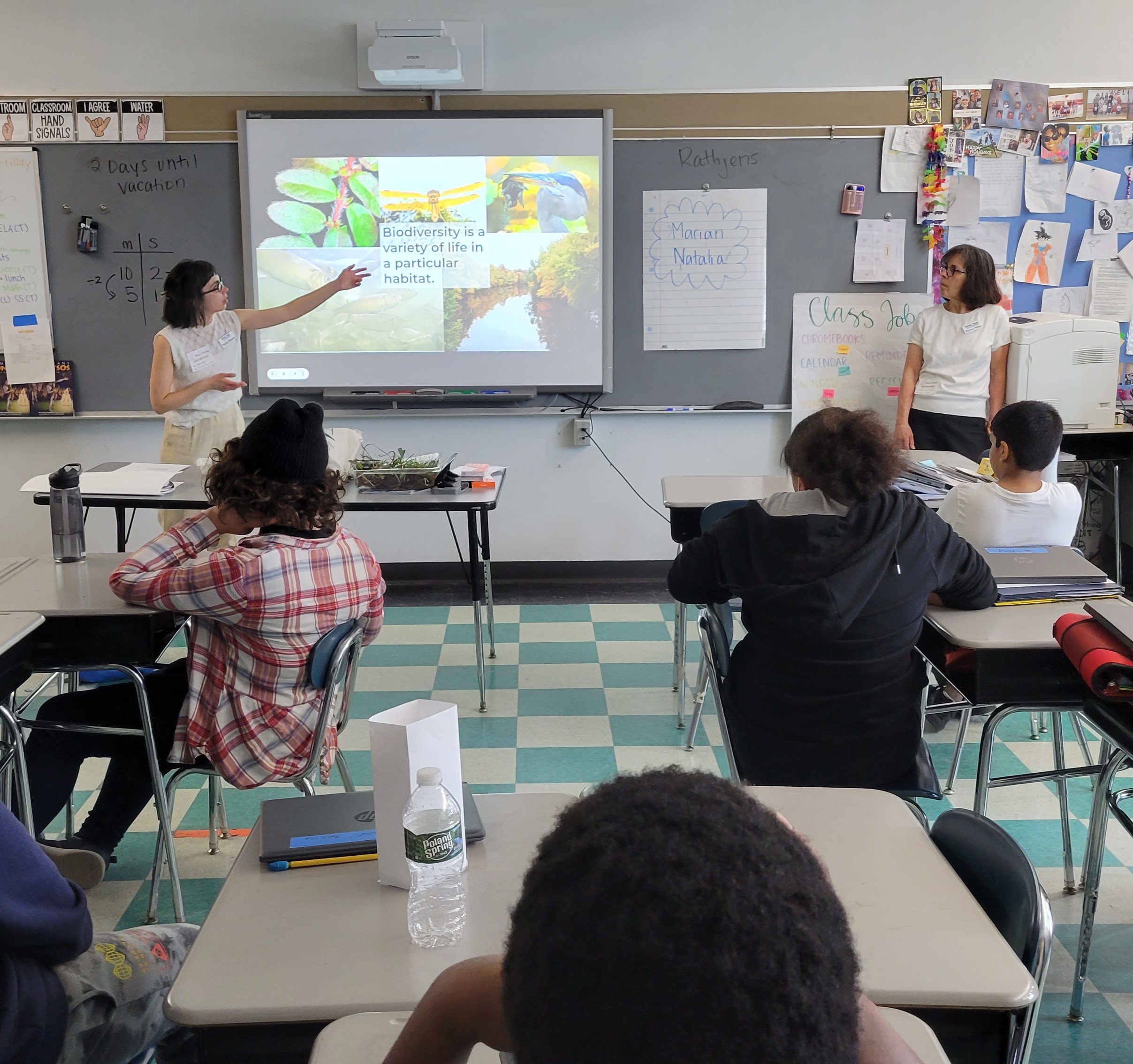Watershed Educator Natalia Bayona and MyRWA’s former educator Marian Miller directly engaged 697 students and 62 teachers or adults through 47 virtual or in-person programs during the last school year. Students were from 10 communities including Chelsea, Everett, Malden, Medford, Cambridge, Somerville, Arlington, Burlington, Winchester, and Wakefield. All the programs linked real on-the-ground science and restoration happening locally with what the students are learning in school.
Following in Marian’s footsteps, Natalia facilitated several programs on biodiversity and stormwater pollution with established partner schools, as well as a five-week pilot programs with the after school Science Club at Clark Avenue Middle School in Chelsea. Marian worked with teachers and science curriculum coordinators to outline the multi-pronged program, which covered stormwater pollution, herring ecology, and climate resiliency. Natalia carried out each session in-class or at local parks – including Mary O’Malley State Park, a MyRWA baseline water quality monitoring site – where students learned how to test water quality and survey birds. More about the program can be found on the district’s website here.
Perhaps the highlight of the year came in late spring during the peak of herring migration when, with the waning of COVID restrictions in schools, Marian, Natalia, MyRWA staff, and partners worked together to host 9 field trips at Mystic Lakes Dam for the first time since 2018, and 4 field trips at Horn Pond for the first time ever! Students saw river herring, learned to sample water for invertebrates, and surveyed predatory birds. These exploratory, two hour-long programs gave some students the opportunity to visit the Mystic Lakes Dam and learn how to use a microscope and binoculars for the first time. Likewise, the programs at Horn Pond engaged students from nearby schools who frequent the dam in learning about herring monitoring and local biodiversity. Our staff was awe-inspired to share these experiences with students throughout our watershed after a tumultuous COVID season.
Here is an account from Natalia about MyRWA’s first program of the year at Mystic Lakes Dam:
"Students and I saw gulls and cormorants fighting for fish on the spillway for the majority of the morning (the herring are meaty enough that birds can't seem to tear them apart, so the winner takes all). The last group to visit the dam around lunchtime saw lots of adult herring calling it quits on the spillway while the birds were taking a siesta (one fish flipped over into the Lower Lake). That same group stayed with me while I counted a total of 91 juvenile eels at the eel passage. We left just as a few rain clouds rolled through--and I even spotted a resident bald eagle with help from photographers. This was an incredible experience for me as a biologist. A hopeful reminder that the magic of life is always somewhere waiting to be found :). Glad we are here to experience and share that with our community!"
With the continued support from staff and local partners such as Mass Audubon and GreenRoots, we are confident that our education program will reach new heights in the coming school years by engaging more youth from environmental justice communities throughout our watershed in real-world STEM.
Thank you to the many funders of this education work including: Paul and Edith Babson Foundation, Cell Signal Technology, Exelon, MathWorks, National Fish and Wildlife Foundation Five Star Program, New England Biolabs, Plymouth Rock Foundation, and National Resource Defense Council, Inc.
Want to bring the wonder of the watershed to your classroom or youth group? Contact Natalia.Bayona@MysticRiver.org.







